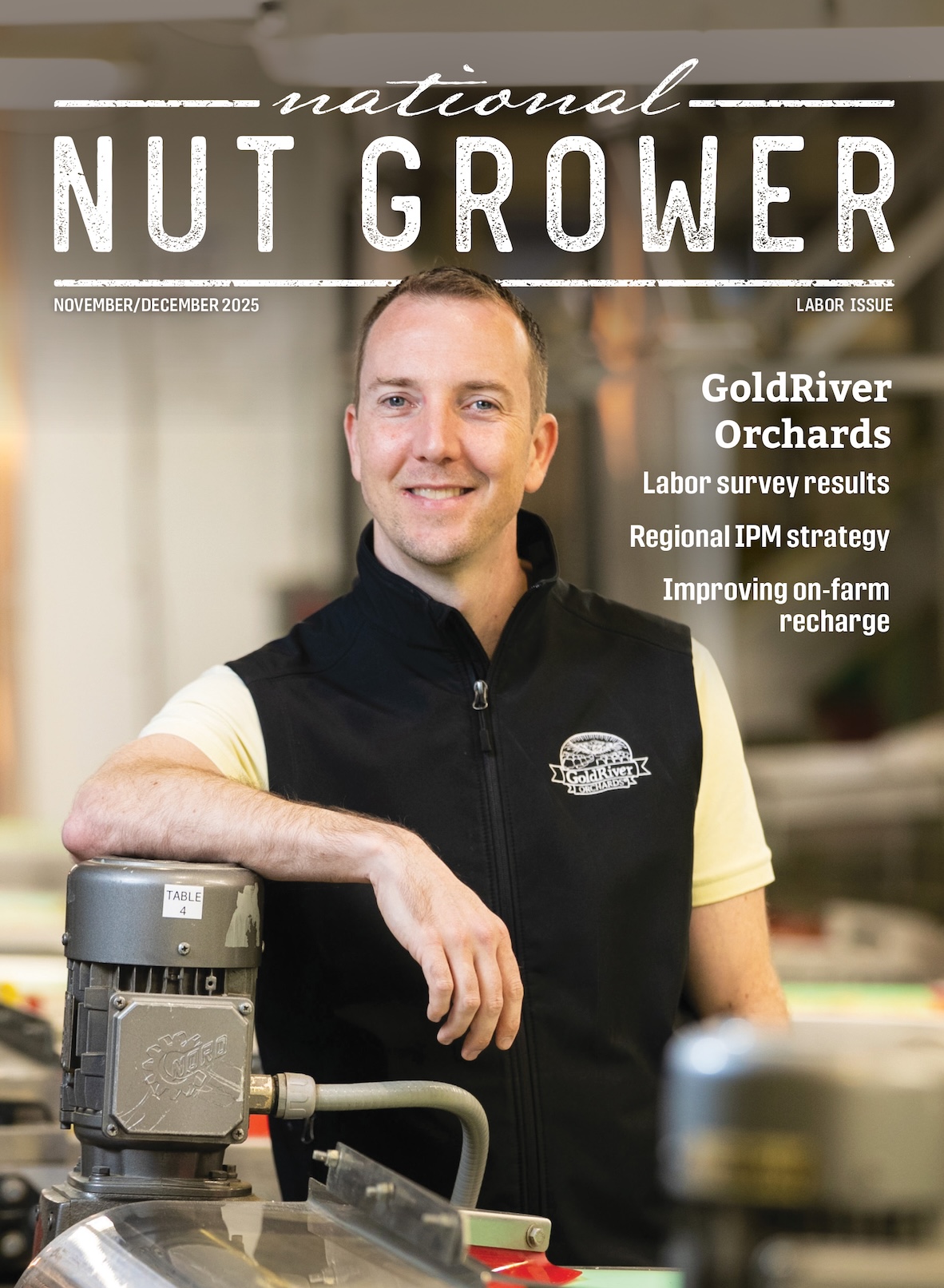
May/June 2025
2025 Pest and Disease Survey Report
Pests and diseases remain top of mind for U.S. nut growers, who continue to battle complex pressures across orchards and growing regions. In the 2025 Pest and Disease Survey, National Nut Grower gathered insights from growers specializing in almonds, pistachios, walnuts, pecans and hazelnuts to identify the industry’s leading concerns from 2024 and what challenges persist in 2025.
Beyond highlighting the most challenging pests and diseases, our survey responses highlighted that growers are looking for practical tools, improved communication and continued innovation to tackle these challenges.
Most troublesome pests
As in past years, navel orangeworms (NOW) continued to plague growers, with 35% of respondents identifying them as a top concern in 2025. That’s up from the 29% who said it was the most troublesome pest they faced in 2024.
Aphids were also consistently problematic, cited by 26% as a key pest in 2024 and by 27% as a concern for the 2025 season. Leaf-footed plant bugs and codling moths followed closely, tied at 21% as top concerns this year. Other frequently mentioned pests included brown marmorated stink bugs (26%), nut borers (20%) and walnut husk flies (19%).
Wildlife — particularly squirrels, birds and rodents — was a recurring pain point for growers across regions. “Squirrels and gophers … use a lot of expensive bait,” one respondent wrote.
Some growers also noted lesser-known but still damaging pests such as pecan nut casebearers, twig borers and various mites.
Disease challenges persist
Growers reported that they faced a wide range of disease issues in 2024, with no single culprit dominating responses — a sign of how disease pressures can vary among regions and crops.
Alternaria, blight, anthracnose and canker crown gall were the most commonly cited issues. Roughly 20% of respondents struggled with each of those diseases. Other frequently reported problems included bacterial blast, botryosphaeria and scab.
Concerns about blight, anthracnose and alternaria remained steady in 2025, with each disease cited as a challenge by 25% of respondents. Phytophthora, scab and canker crown gall were also on growers’ radars this year.
One grower noted the impact of extreme weather swings on disease cycles and tree health: “Too much rain, and we develop scab and possibly hinder pollination. Too little rain, and the trees produce too small of a crop,” the respondent wrote. “If the timing of harvest is affected by rain, snow, freeze or wind — you can lose so much of your crop to wildlife.”
What growers need
In an open-ended question, growers were asked what would help them most in addressing pest and disease issues. Responses overwhelmingly pointed to research, best practices and practical, results-driven advice on topics such as mating disruption technologies, biopesticides and soil strategies, and region-specific recommendations for timing and application methods.
One respondent asked for information on “early warning signs like holes, discoloration,” while another emphasized the need for tools to “recognize what’s damaging my plants.”
Several growers voiced interest in natural or integrated solutions. Suggestions included neem oil, diatomaceous earth and companion planting to repel pests, as well as improving soil microbiology to reduce pest stress naturally.










